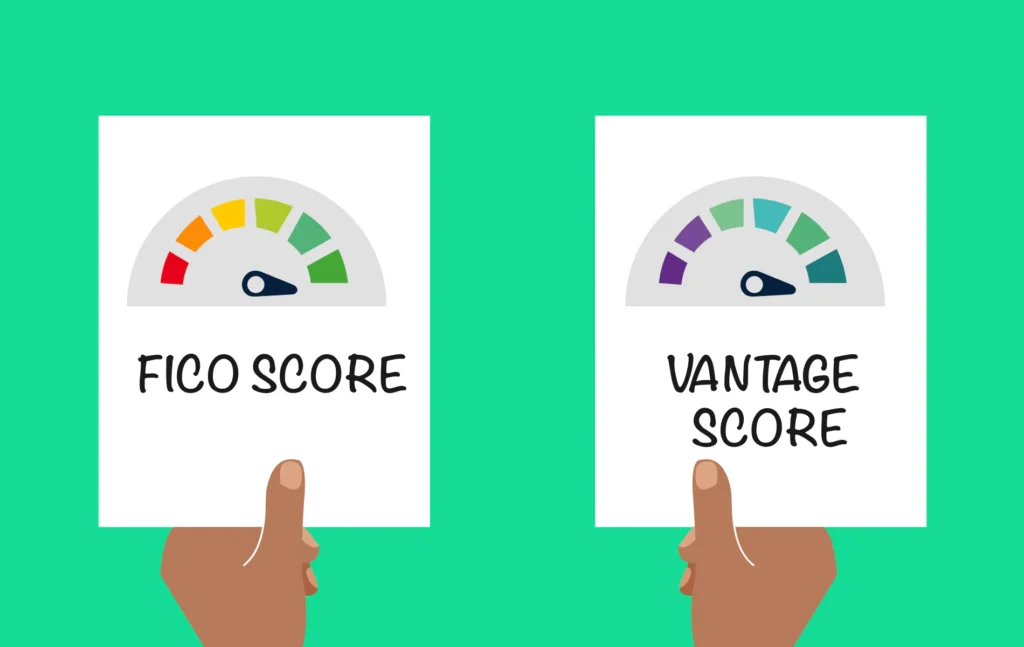Credit scoring models play a pivotal role in the financial industry, providing a systematic and quantitative way to assess an individual’s creditworthiness. These models are employed by lenders, credit card companies, and other financial institutions to evaluate the risk associated with extending credit to consumers. In this extensive exploration, we will delve into the intricacies of credit scoring models, their evolution, methodologies, and the impact they have on the financial landscape.

Evolution of Credit Scoring Models:
The roots of credit scoring can be traced back to the early 20th century when lenders started using basic statistical methods to assess credit risk. However, it was the advent of computers and data analytics in the latter half of the century that paved the way for more sophisticated credit scoring models.
The 1970s saw the emergence of the first standardized credit scoring system, known as the FICO score. Developed by the Fair Isaac Corporation, the FICO score revolutionized the credit industry by providing a numerical representation of an individual’s credit risk. Since then, various iterations of the FICO score have become the industry standard in credit scoring.
In recent years, alternatives such as the VantageScore have gained traction, offering a different perspective on creditworthiness. VantageScore was jointly developed by the three major credit bureaus—Equifax, Experian, and TransUnion—as a response to the dominance of FICO.
Basic Components of Credit Scoring Models:
Credit scoring models use a combination of historical credit data, statistical algorithms, and financial behaviors to generate a three-digit credit score. The score, typically ranging from 300 to 850, serves as a numerical representation of an individual’s credit risk. The higher the score, the lower the perceived risk.
- Payment History (35%):
The most influential factor in credit scoring models is payment history. This component assesses how consistently an individual makes payments on credit accounts. Timely payments have a positive impact, while late payments, defaults, or bankruptcies can significantly lower the credit score. - Credit Utilization (30%):
Credit utilization examines the ratio of credit card balances to credit limits. A lower utilization rate suggests responsible credit management, while high utilization may indicate financial stress. Maintaining a balance below 30% of the credit limit is generally recommended for a positive impact on credit scores. - Length of Credit History (15%):
The length of time a consumer has been using credit influences their credit score. This factor considers the age of the oldest credit account, the average age of all accounts, and the age of specific types of accounts. A longer credit history can have a positive impact on credit scores. - Types of Credit in Use (10%):
Credit scoring models assess the variety of credit accounts held by an individual. This includes credit cards, mortgages, installment loans, and other types of credit. A diverse mix of credit can positively impact the credit score. - New Credit (10%):
Opening multiple new credit accounts in a short period can be perceived as risky behavior. Credit scoring models consider the number of recently opened accounts and recent credit inquiries. A high number of inquiries or new accounts can negatively impact the credit score.
Major Credit Scoring Models:

1. FICO Score:
The FICO score, developed by the Fair Isaac Corporation, is one of the most widely used credit scoring models globally. It takes into account the five basic components mentioned above, assigning weights to each based on their importance. FICO scores range from 300 to 850, with higher scores indicating better creditworthiness.
- FICO Score Versions: FICO scores have evolved over time, with different versions catering to specific industries or purposes. The most common FICO versions include FICO Score 8, FICO Score 9, and industry-specific versions like the FICO Auto Score and FICO Bankcard Score.
2. VantageScore: VantageScore is a credit scoring model jointly developed by the three major credit bureaus—Equifax, Experian, and TransUnion. Unlike FICO, which uses specific weightings for its components, VantageScore uses a more transparent and consistent methodology across all versions. VantageScore also ranges from 300 to 850.
- VantageScore Versions:
VantageScore has gone through several versions, with VantageScore 3.0 being one of the most widely used. VantageScore 4.0, introduced later, further refined the model, offering a more sophisticated approach to assessing creditworthiness.
3. Other Credit Scoring Models:
Besides FICO and VantageScore, other credit scoring models exist, each with its unique methodology and purpose. Some lenders may develop proprietary models tailored to their specific needs. However, FICO and VantageScore dominate the market, and their scores are most commonly used by lenders in their decision-making processes.
Credit Score Impact on Borrowing:
The credit score assigned to an individual has a profound impact on their ability to borrow money, the terms of the borrowing, and the overall cost of credit. Here are some key ways in which credit scores influence borrowing:
- Interest Rates:
Perhaps the most tangible impact of credit scores is on the interest rates offered by lenders. Individuals with higher credit scores are typically eligible for lower interest rates, translating to lower borrowing costs. Conversely, those with lower credit scores may face higher interest rates. - Loan Approval:
Lenders use credit scores as a tool to assess the risk of lending to an individual. A higher credit score increases the likelihood of loan approval, while a lower score may result in denials or approval with less favorable terms. - Credit Limits:
Credit scores also influence the credit limits assigned to individuals. Higher credit scores may lead to higher credit limits on credit cards and other revolving credit accounts. - Down Payments:
In the case of large loans, such as mortgages or auto loans, credit scores can impact the required down payment. Individuals with lower credit scores may be required to make larger down payments as a risk mitigation strategy for lenders.
Credit Score Monitoring and Reporting:
Understanding and monitoring one’s credit score is essential for financial health. Credit reports, which serve as the basis for credit scores, are maintained by credit bureaus. Consumers have the right to request free annual credit reports from these bureaus. Additionally, many financial institutions and credit card companies offer free access to credit scores as part of their services.
- Credit Report Discrepancies:
Regularly reviewing credit reports is crucial for identifying errors or discrepancies. Incorrect information on a credit report can negatively impact credit scores. Disputing and correcting such inaccuracies is essential for maintaining an accurate credit profile. - Credit Score Monitoring Services:
Numerous credit monitoring services provide real-time access to credit scores and alerts for changes in credit reports. These services can be valuable for individuals seeking to actively manage and improve their credit.
Strategies for Improving Credit Scores:
For individuals looking to enhance their creditworthiness, there are several strategies that can positively impact credit scores over time:
- Timely Payments:
Consistently making payments on time is the most effective way to positively impact credit scores. Late payments, defaults, and bankruptcies have a significant adverse effect. - Credit Utilization: Managing credit card balances and keeping credit utilization low is crucial. Paying down credit card debt and avoiding maxing out credit limits can improve credit scores.
- Lengthening Credit History:
While it’s not possible to change the length of credit history overnight, maintaining older accounts and avoiding unnecessary closures can positively impact this aspect of credit scoring. - Diverse Credit Mix:
Actively managing a mix of credit types, including credit cards, installment loans, and mortgages, can contribute positively to credit scores. However, individuals should only open new credit accounts when necessary and in line with their financial goals. - Limiting New Credit:
Opening multiple new credit accounts in a short period can be perceived as risky behavior. Limiting new credit applications and inquiries can positively impact credit scores.
Challenges and Criticisms of Credit Scoring Models:
While credit scoring models are integral to the financial system, they are not without challenges and criticisms:
- Limited Information:
Credit scores are based solely on credit-related information and do not consider other aspects of an individual’s financial health, such as income, savings, or employment status. This limitation may provide an incomplete picture of a person’s ability to manage credit responsibly. - Impact of Negative Events:
Negative events, such as bankruptcy or foreclosure, can significantly impact credit scores and may take years to recover from. This can create challenges for individuals seeking to rebuild their credit after facing financial hardships. - Scoring Model Variations:
Different lenders may use different credit scoring models or versions, leading to variations in scores obtained from different sources. This lack of standardization can sometimes be confusing for consumers. - Overemphasis on Credit Utilization:
While credit utilization is an important factor, some critics argue that its weight in credit scoring models may disproportionately affect individuals who use credit responsibly but have high credit card balances due to large credit limits.
Credit Scoring in a Changing Landscape:
The landscape of credit scoring is continually evolving, influenced by technological advancements, regulatory changes, and a growing emphasis on financial inclusion. Some notable trends and developments include:
- Alternative Data:
There is a growing recognition of the importance of incorporating alternative data into credit scoring models. This includes data beyond traditional credit history, such as utility payments, rental history, and even non-traditional sources like social media activity. The goal is to provide a more holistic and inclusive view of an individual’s creditworthiness. - Machine Learning and AI:
The use of machine learning and artificial intelligence (AI) is gaining traction in credit scoring. These advanced technologies can analyze vast amounts of data and identify complex patterns, potentially improving the accuracy of credit risk assessments. - Focus on Financial Inclusion:
Efforts are being made to address biases in credit scoring models and promote financial inclusion. This includes initiatives to ensure that credit scoring models do not unfairly penalize certain demographic groups and the exploration of alternative approaches to assess creditworthiness. - Consumer Empowerment:
Increasingly, there is a focus on empowering consumers to understand and take control of their credit. Financial literacy programs, easy access to credit reports, and the availability of credit score monitoring services contribute to this trend.
Conclusion:
Credit scoring models are foundational to the modern financial system, providing a standardized and efficient way to assess credit risk. The evolution of these models, from basic statistical methods to sophisticated algorithms, has shaped the way lenders evaluate borrowers and make credit-related decisions.
Understanding the components of credit scoring models, monitoring credit reports, and actively managing financial behaviors are essential for individuals seeking to navigate the complexities of credit. While credit scores have a significant impact on borrowing costs and opportunities, they are just one aspect of an individual’s financial profile. As the landscape continues to evolve, the emphasis on financial inclusion, the responsible use of alternative data, and advancements in technology contribute to a more dynamic and inclusive credit ecosystem. Ultimately, credit scoring models serve as a valuable tool in promoting responsible lending, financial literacy, and the broader goal of facilitating access to credit for diverse populations.




One thought on “Credit Scoring Models: A Comprehensive Guide”